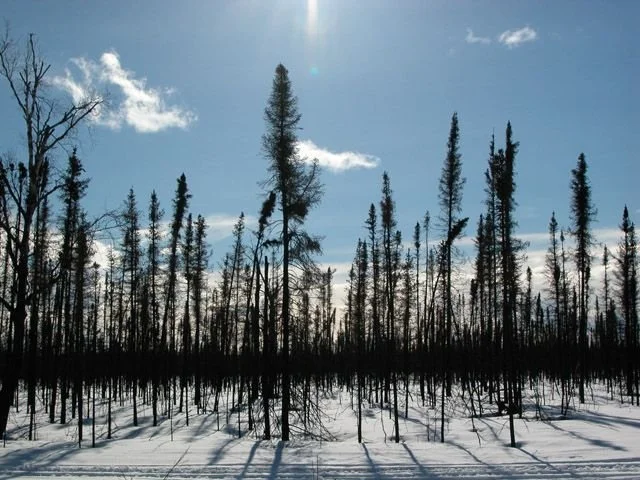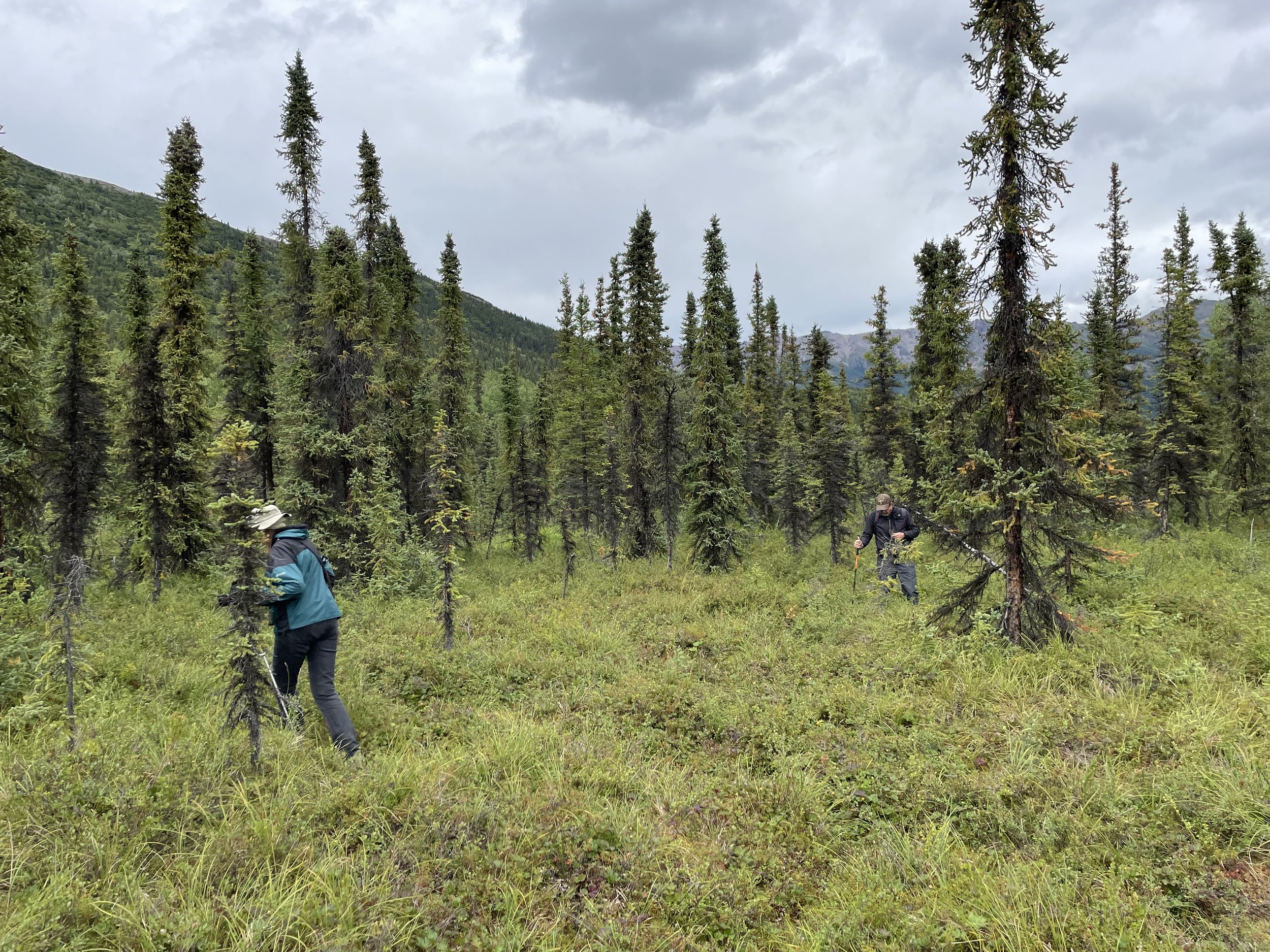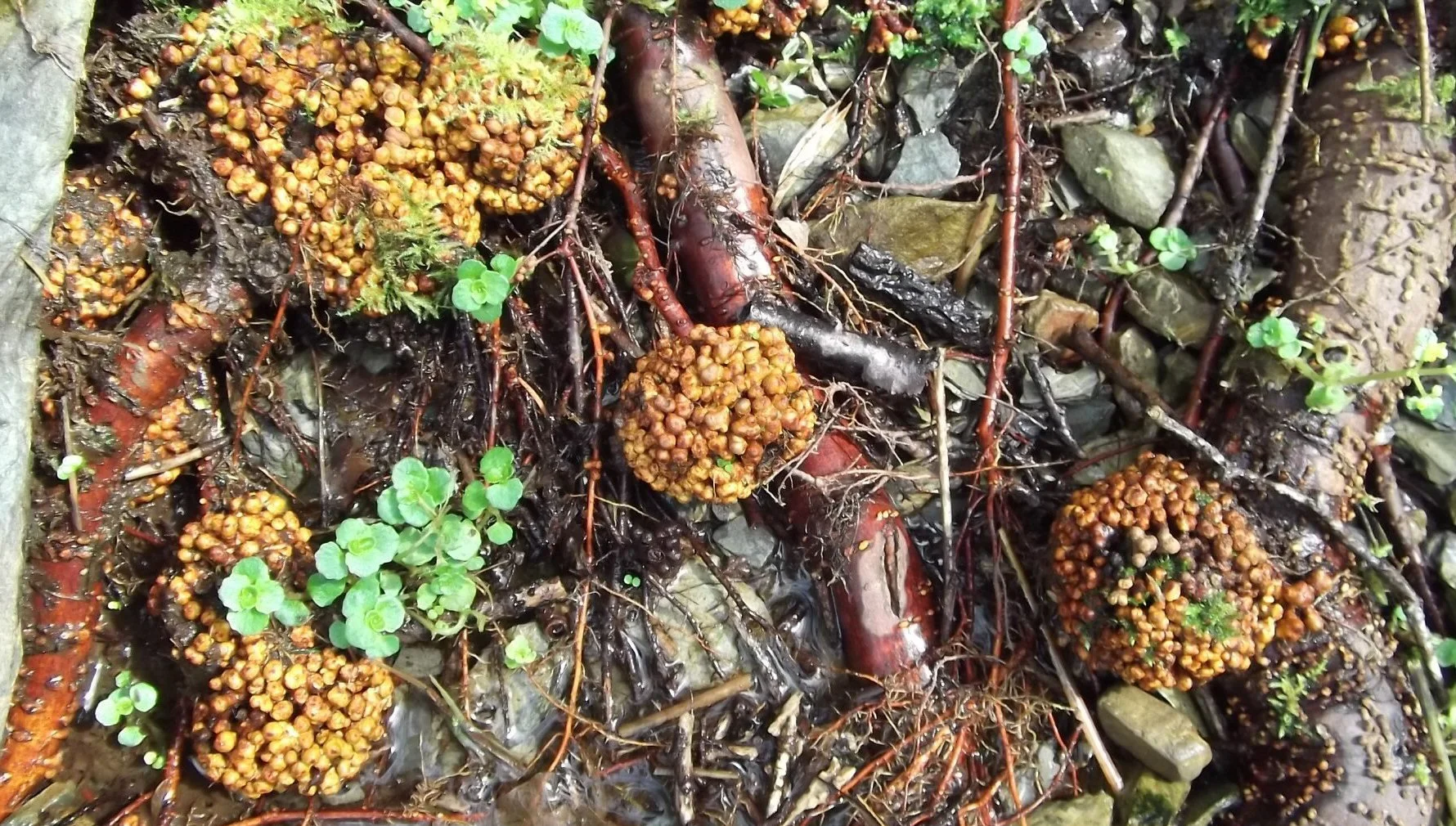Trees in Denali: How They Thrive in The Harsh Climate
Over half a million people visit Denali each year, and for almost all of them, the focus is on two things:
Seeing the mountain
And seeing wildlife
Understandably so. Both of these are unforgettable experiences. The only drawback is that when guests arrive hyper focused on these two things they can miss out on the fascinating plants and signs of wildlife that exist all around them. All of which deserve our appreciation.
It takes a rugged determination, one might say stubbornness, to call this place home.
There’s a reason less than 1 million people live in a state 3 times the size of Texas. Why only 1,500 moose, 300 bear, and 80 wolves live in a National Park that stretches over 6 million acres. And why there are only a handful of trees you will see over and over again… because these are the few that have learned to thrive in one of the harshest environments on earth. For the trees that do flourish, many diverse strategies are utilized, each one as fascinating as the last.
In today’s article we will explore some of the unique characteristics of Denali’s trees and hopefully gain a deep appreciation for what it takes to tough out these brutal Alaskan winters. Starting with the tree that has come to dominate these forests… the Black Spruce.
A skinny Black Spruce forest. What natives call the land of little sticks.
What they lack in beauty they make up for in personality and perseverance.
The Black Spruce: Scraggly and Tough as Nails
One thing you will be hearing a lot in Denali is the term permafrost. Permafrost areas consist of two layers. The active layer, making up the first 1 to 11 feet of soil, which thaws during summer then refreezes during winter. Then beneath that is a layer of frozen soil, or permafrost, that remains frozen year round for 2 years or more. The reason you will hear this term over and over is because permafrost has a major impact on the Denali ecosystem. It often determines what grows where and for Black Spruce it’s no different.
Side view of a permafrost area. The active layer on top and permafrost layer beneath it. Permafrost can continue up to 5,000 ft (1,500 m) beneath the surface.
While many trees send a taproot deep into the soil to anchor themselves in, the Black Spruce utilize a shallow root system, allowing them to thrive where most trees can’t gain a foothold. But in order to deal with cold soil temperatures, shallow roots, and poor nutrients, trade offs must be made. Many Black Spruce will contain large areas of branches where no needles are growing giving off the appearance the tree is dying. The trees below are actually perfectly healthy. They are simply conserving energy by only growing green where the sun is touching them.
Another adaptation to poor growing conditions is taking this narrow, pipe cleaner shape we see above. This is not only less energy intensive, but offers less wind resistance, meaning its shallow roots are less likely to be toppled over from strong winds.
But it’s more than weather these trees must contend with. There is also a constant threat from infection and pests, including the spruce beetle, from which they must regularly fend off attacks. If you’ve ever walked through a spruce, fir, or pine forest and noticed the sweet smell, almost like vanilla or butterscotch coming off the trees, you’ve experienced one of their main defense mechanisms. That sweet smell is given off by a compound called terpenes found within the resin.
Next time you’re walking through a spruce forest make sure to give those sweet terpenes a sniff.
Terpenes in the Black Spruce have many functions and uses, including their main role, which is to create a toxic environment for insects that would like to harm it.
When spruce beetles attack they will begin boring into the phloem, which is the tree’s vascular tissue, responsible for transporting sugars and other photosynthates throughout the tree. If a large enough portion of the phloem is damaged the tree will starve and die. The beetle does not face an easy task, as a healthy black spruce will quickly pitch them out, trapping them in resin before they can lay their eggs. So their main strategy will be to seek out a tree that has been stressed or weakened in some way, then release pheromones, attracting more beetles to overwhelm the tree's defenses.
Spruce Beetle feeding pattern.
This is a fungal infection called a Witches Broom. While it won’t kill the tree it might cause it to be stressed and more susceptible to the Spruce Beetle.
Permafrost and poor growing conditions means these trees experience a base level of stress much higher than those in more temperate zones, but black spruce are tough as nails, and these forests stay resilient. Providing food and shelter for Denali’s birds and red squirrels, as well as endless sustenance for the area’s native people, who to this day use every part of the spruce tree for their survival.
From Bark to Canoe: Unveiling the Traditional Uses of Paper Birch in Alaska
It doesn’t take long to figure out where the Paper Birch got its name. It’s hard to mistake the smooth, white bark which peels off into paper-like sheets, and takes an incredibly long time to decompose. Often sticking around long after the actual tree has died and rotted away.
A Paper Birch grove and its famous peeling bark.
Often one of the first to populate an area after a wildfire, the Paper Birch will typically form stands of trees where it is the only species, as it will quickly be overcome in mature forests by more shade-tolerant trees.
Characteristics of that peeling bark are incredibly useful to the survival of natives. The bark contains a chemical called betulin, which is hydrophobic and highly flammable, making it an excellent way to get a fire going on a rainy day, and the water resistant bark has been used by natives to waterproof their canoes for centuries. To do this they will heat up spruce resin and apply it to the bottom of their canoes, then apply the birch bark, which offers an excellent waterproof layer.
Birch bark canoe
Betulin also plays an important role in the trees ability to survive the winter. It coats the bark in a white powder which reflects the sun’s heat. This is important because it’s not the cold that kills so many trees, but the combination of heating throughout the day, followed by rapid cooling at night which will cause them to snap and break. To counteract this many trees in Denali will utilize white or light gray bark to reflect the sun’s heat.
But I know what you’re thinking… what about the dark gray bark of the spruce tree? In this case the spruce forms a deeply furrowed and scaly bark which stops the sun from heating the inner parts of the tree. Two equally effective ways of accomplishing the same task.
The Nitrogen Connection: How Alder Trees Nourish Alaskan Soils and Wildlife
Young and old Alder catkins
The Alder is a tree of many uses, and one of my favorites in the entire forest, as it plays a vital role in developing ecosystems.
The young female catkins are high in protein, and make an excellent survival food, while older catkins have been utilized for smoking meats. The red bark has been used in dyes and the malleable wood used to make anything from furniture to instruments.
Its soft porous wood does not rot, but hardens underwater, allowing it to grow well in river banks, where it helps stabilize the soil and prevent erosion. Though the Alder’s most important role is as a pioneer species, meaning it is one of the first to populate an area that has been taken out by a natural disaster such as a fire, flood, or landslide. Alder will move into these disturbed areas and begin fixing nitrogen. Taking it from the air and making it available to other plants in the soil.
To put it more accurately, it is not the alder itself but a bacteria colonizing its roots, which carries out this process. The bacteria absorbs nitrogen from the air through pores in the soil, transforming its chemical structure into a bioavailable form, which the alder and other plants can now absorb. Alder then recycle their nitrogen rich leaves back into the soil creating an even more fertile environment for surrounding plants.
This superpower of the Alder has been known for a very long time as there is evidence the Inca would plant them in certain areas to increase soil fertility.
Bacteria nodules growing on Alder roots
Though their lives are short, often no more than 50 to 100 years, Alder play an important role in an ecosystem's evolution. Creating a fertile environment for trees like the black spruce to develop into healthy and stable forests.
Bent but Unbroken: The Remarkable Adaptations of the Arctic and Alaskan Willow
The Feltleaf or Alaskan Willow
Feltleaf Willow
Last but not least are just a few of the 27 species of willow that call Denali home.
The most common willow in Alaska is the feltleaf willow you see above. It grows up to 30 ft tall though in harsher climates remains much smaller. It is a dioecious species meaning each tree is either male or female. Each seed is surrounded by this downy layer of fibers resembling cotton so they can be more easily dispersed by water and wind.
Moose are especially fond of this plant which can provide up to 95 percent of their winter food. While walking through Denali it will often look like someone walked by carelessly pruning every willow in sight. Though I think we can forgive the moose, who try their best, but are not the most skilled arborists.
These willow are very hardy, as they can survive Moose browsing up to 90 percent of their twigs, and will grow back quickly and easily.
Arctic Willow
A common adaptation plants will have to arctic and subarctic areas is dwarfism. Staying close to the ground where they are less susceptible to the elements.
This small, shrubby willow is well adapted to the tundra environment, with its low-lying structure and shallow root system that allows it to thrive in nutrient-poor soils and rocky ground. The arctic willow even produces its own pesticide to keep insects away during its growing season.
Due to its sheer toughness, it is able to flourish on exposed ridges, where most plants would be torn apart by sand and snow abrasion.
Arctic Willow. A far cry from the Weeping Willow you might be used to.
All willows also contain salicin, which when we ingest it is converted into salicylic acid, the same ingredient found in aspirin. It can be steeped into a tea or some will even chew directly on the bark for the same effect. So the next time you feel that headache coming on make sure to check to see if you have any of nature’s aspirin around!
Learn More!
Follow @northernepics on Instagram and sign up for our email list if you want to keep learning more about the fascinating plants and wildlife of the Last Frontier.
And if you’re ever in Denali, Alaska, email info@northernepics or call (907) 687-2070 to book a tour with us and learn more than you could ever have expected about the Denali wilderness.
















